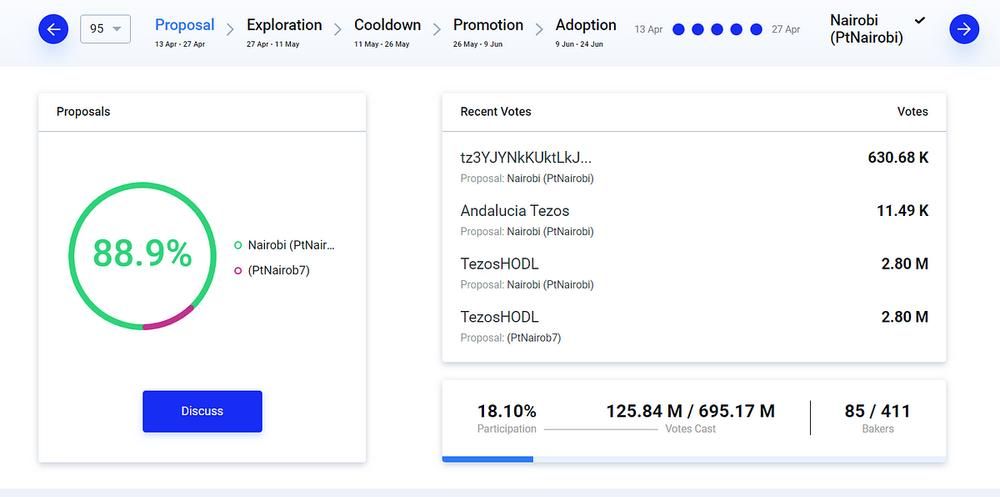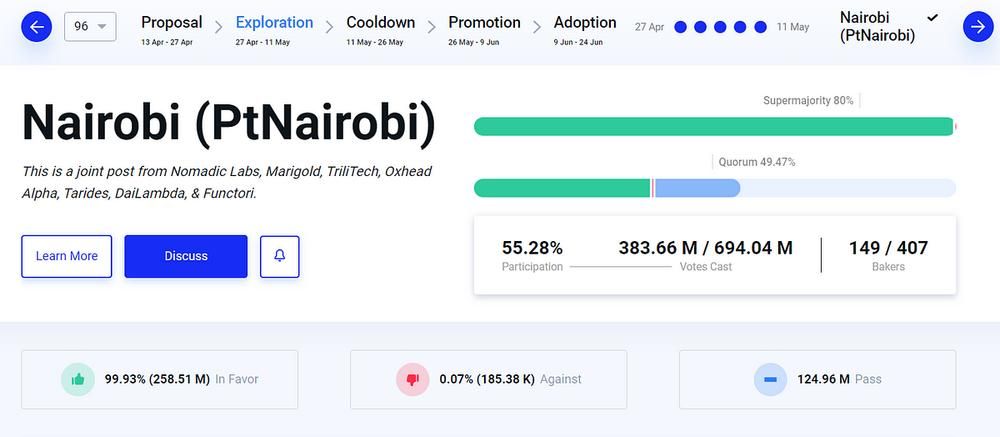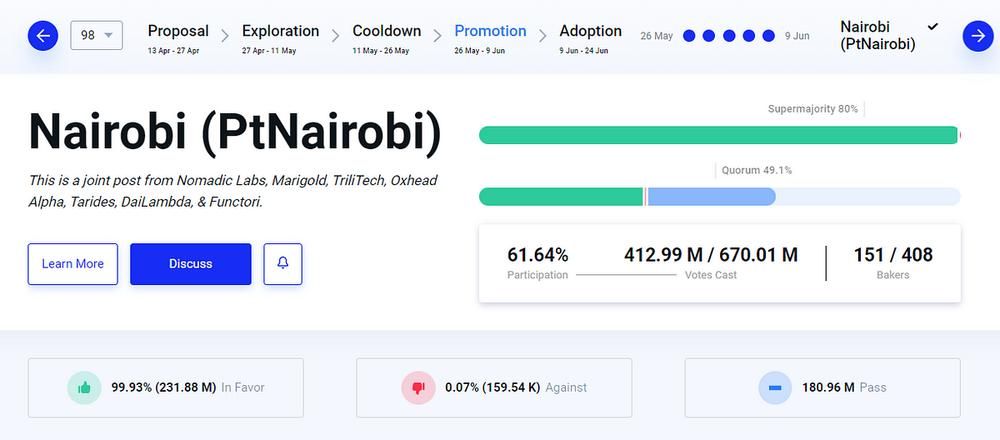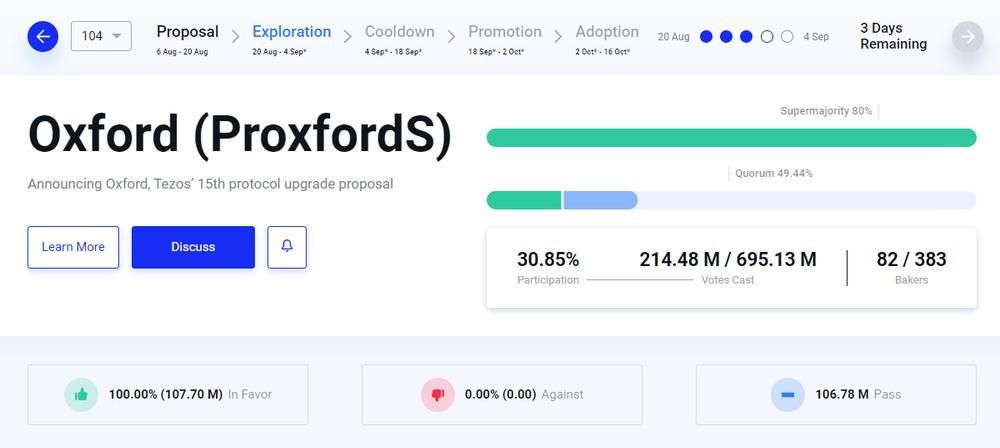Tezos On-Chain Governance Explained
Breaking down and learning one of the most important Tezos features; on-chain governance. Who can get involved and how does the whole process work exactly?
1,250 words, 7 minute read

If you ever heard or read anything about Tezos, there are great odds that you also saw “on-chain governance” right next to it. It would not be a surprise as on-chain governance was one of the main reasons behind Tezos’ inception. It is also a feature that most other blockchains have overlooked or even incorporate into their protocol.
The lack of a formal process among all stakeholders in the protocol decision-making process of a blockchain typically leads to disagreements and divisions which oftentimes leads to costly and divisive hard forks.
A decentralized blockchain cannot be fully decentralized if the decision-making process for future protocol upgrades is made by a few selected people against all the stakeholders.
That’s exactly the problem on-chain governance was made to solve as it gives a specific on-chain process that allows all the stakeholders to vote on, test, or even propose new upgrades for the protocol. This allows the community to have a say and come to a consensus based on what the majority of the network wants for the future of the chain.
But how exactly does this process work on Tezos and why is it such a powerful feature? Let’s take a closer look.
The 5 Periods Of The Governance Process #
The whole process from start to end is broken down into 5 periods and each period lasts about 14 days which amounts to a total of about ~2.5 months. Let’s take a look at these periods and how it plays out by using the latest successful protocol upgrade named “Nairobi” as an example.

This is the first period where any validator (baker) of the network can inject their proposal(s) for the network to vote on.
Each validator can inject up to 20 proposals and their injection also counts as their vote. The voting power of each validator is calculated at the beginning of each period and it is proportional to their staking balance*.
*Staking balance = Baker’s holdings at stake + their delegators balance
At the end of this period, the proposal with the most votes moves on to the next phase. Note that for a proposal to move forward, it must get at least 5% of the network’s votes (Participation).
If the 5% threshold isn’t achieved at the end of the period, a new proposal period begins, and the process restarts. The same thing happens in case of a tie or if there are no proposals injected.
In our example picture above, we see that the “Nairobi (PtNairobi)” proposal was injected and it had the most votes with a participation of 18.10% so it moved to the next period.

From the Exploration period and on, we are dealing with only one proposal, i.e.; the winning proposal from the previous period. (in our example “Nairobi (PtNairobi)”)
In this Exploration period, there are 3 ways for a validator to vote (Yea, Nay, or Pass) and there are two thresholds that need to be passed for the proposal to move forward, the quorum and the supermajority.
- Quorum is the minimum participation required of all the network’s voting power. All 3 types of votes (Yea, Nay or Pass) count in the quorum and the number required is self-adjusting depending on previous periods’ participation. If you are interested in the exact math used behind the self-adjustment you can find them here.
- Supermajority is about the ratio between the Yea and Nay votes. For a proposal to move forward, at least 80% of the votes must be Yea or the proposal fails.
In our example picture above, we see that the quorum needed was 49.47% and we had a participation of 55.28% so the quorum was reached. The supermajority was also reached since 99.93% of the votes were Yea (the Pass votes do not count in the supermajority metric) so the proposal can move to the next period.
3. Cooldown Period:

The next period after the Exploration period is the Cooldown period where the community gets some time to discuss, test, and look into the proposal in more detail so that they can decide on their final vote without rushing things.
This period doesn’t include any voting.
4. Promotion Period:

Once the Cooldown period is over, the Promotion period begins and the stakeholders are called to cast their final votes on whether they want the proposal to get implemented or not.
The voting mechanics are exactly the same with the Exploration period, so again a specific quorum and a supermajority of Yea votes are required for the proposal to get accepted.
5. Adoption Period:

The final period of the whole process is the Adoption period. Once a proposal reaches this phase it no longer can be canceled. This period allows the ecosystem to prepare for the implementation of the new protocol upgrade that will be activated on the mainnet at the end of this period.
As we said before, each period lasts five baking cycles (roughly ~14 days), and if at any of these periods there is a failure to reach quorum/supermajority etc., it reverts back to the proposal period restarting the whole process.
Where Are We Now? #

At the time of writing, September 1, 2023, “Oxford”, the 15th protocol upgrade proposal is going through the on-chain governance process and more specifically through the Exploration period. Oxford, like many of the previous upgrades, brings in some heavy changes with new features like “Adaptive Issuance” and a new staking mechanism, so now is the best time to get involved. Get your votes in if you are a baker or join in discussions with your baker if you are a delegator and exercise your Tezos civil duty by engaging with the governance process.
Tezos Agora Forum #

While every step of the process is on-chain, there is also a need for discussions to happen off-chain. A place where the community can ask their questions and voice their arguments for or against any proposal or its features.
That’s exactly what the Tezos Agora Forum was created for and although there are Tezos discussions happening in all social media and chat groups, the Tezos Agora Forum is the place of the ecosystem for governance discussions and all other Tezos related discussions.

Whether you are a validator (baker) or a simple tez holder you can have a say in the protocol’s future.
As a validator, you can directly vote on or inject proposals, and as a holder, you can delegate your voting power to a validator whose opinions and values match your own. If your baker’s values and opinions do not match yours, then vote with your feet and delegate to a different baker!
The on-chain governance feature gives Tezos the ability to evolve faster without sacrificing decentralization. The proof of the success of this process lies in the history of the amendments the Tezos blockchain has gone through over the 5 plus years, achieving 14 major protocol upgrades successfully (with the 15th being voted right now) and with zero hard forks. Pardon my pun, but Tezos doesn’t give a fork and will always keep evolving by incorporating the will of those who support the network through on-chain governance.
Never. Stop. Evolving. #Tezos